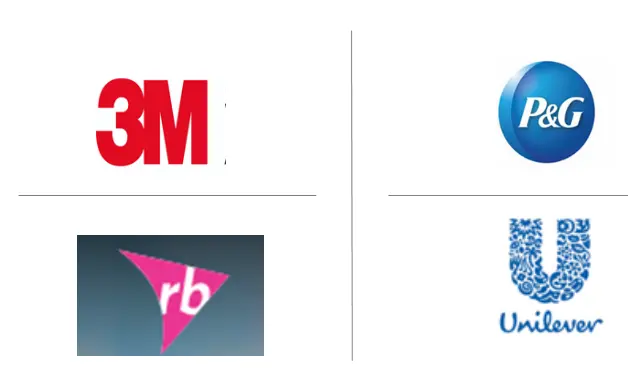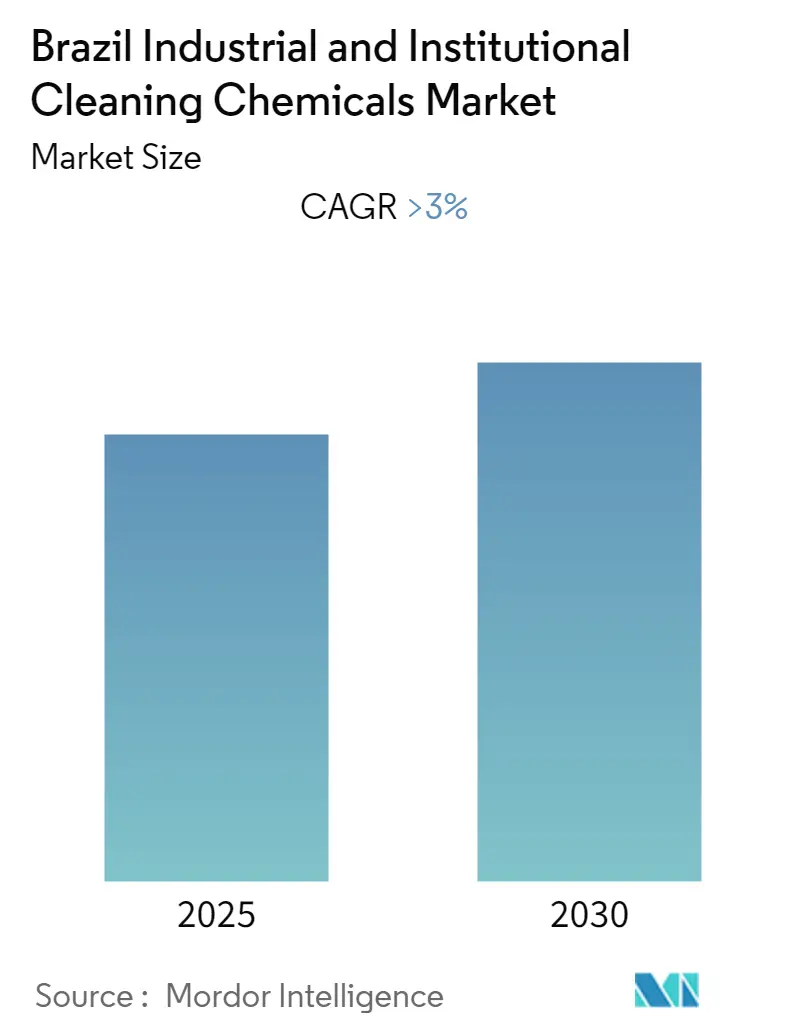
Brazilian Industrial And Institutional Cleaning Chemicals Market Analysis by Mordor Intelligence
The Brazilian Industrial and Institutional Cleaning Chemicals Market is expected to register a CAGR of greater than 3% during the forecast period.
- The emerging use of bio-based cleaning chemicals is likely to provide a major growth opportunity for the market studied, during the forecast period.
- The surfactants segment dominated the market studied, and it is expected to continue its dominance during the forecast period.
Brazilian Industrial And Institutional Cleaning Chemicals Market Trends and Insights
Surfactants Segment to Dominate the Market
- Nonionic surfactants account for around 50% of the overall surfactant production. They do not ionize in solutions and, thus, have no electrical charge, owing to which they can clean well on most soils and are resistant to water hardness.
- Nonionic surfactants produce less lather, and they are generally used in laundry detergents, automatic dishwasher detergents, and rinse aids. They are often used along with anionic surfactants.
- The most widely used nonionic surfactants are alcohol ethoxylates. Other non-ionic surfactants include alkylphenol ethoxylate, ethoxylated thiol, and fatty acid esters.
- Anionic surfactants find uses in institutional cleaners, laundry and dishwashing detergents, and cleansing products. They ionize (convert to electrically charged particles) in solutions, carry a negative charge on the hydrophilic head, have excellent cleaning properties, and generally produce a large amount of lather.
- Linear alkyl benzene sulfonate, alkyl sulfates, and alcohol ethoxy sulfates are the most common anionic surfactants. They are used in low-moisture carpet cleaners, such as encapsulation products.
- Cationic surfactants hold positively charged heads that help the active agents to reduce surface tension. They can be used as wetting agents in acid media. Cationic surfactants find applications, majorly, in industrial detergents and other industrial and institutional cleaning products.
- Cationic surfactants are used in fabric-softening laundry detergents and other types of fabric softeners. They are also the disinfecting/sanitizing ingredients used in some institutional cleaners.
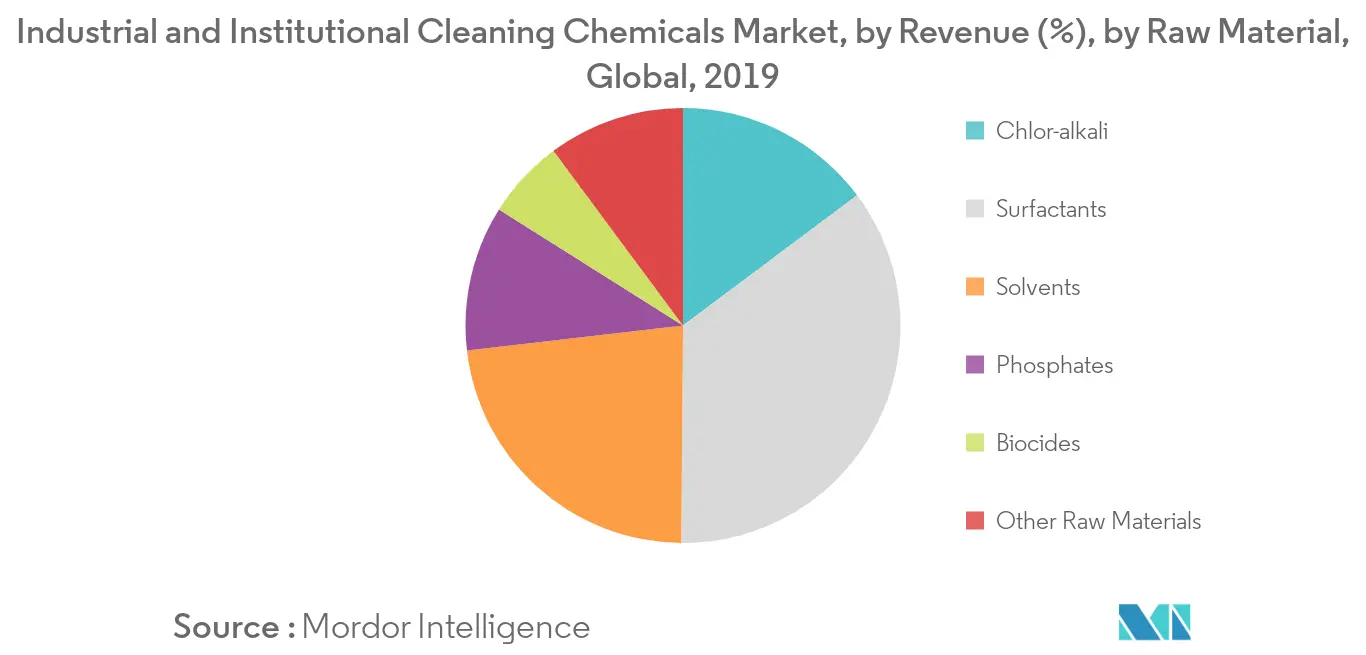
Disinfectants and Sanitizers to Witness the Fastest Growth
- By product type, the disinfectants and sanitizers segment is the one of the largest segments in the Brazilian industrial and institutional cleaning chemicals market. The segment is driven by the rising focus on healthcare and increase in the spread of infectious diseases.
- Disinfection is one of the major properties of all the industrial and institutional cleaning chemicals in the market. However, there is a set of products in the disinfectants and sanitizers segment that are used only for the purpose of disinfecting and sanitizing in Brazilian industrial and institutional cleaning chemicals market.
- Both disinfectants and sanitizers are designed for various applications to kill microorganisms. Sanitizers are used for applications on food-contact surfaces and soft surfaces, such as textiles, fabrics, and carpeting, whereas disinfectants are used on hard surfaces that are not considered as food-contact surfaces.
- Sanitizers used on food-contact surfaces must reduce the bacterial count by 99.999% or five logs. When used on soft surfaces, they must reduce the bacterial count by 99.9% or 3 logs. Some of the commonly used sanitizers are chlorine-based chemicals and halide compounds, such as iodophors.
- Owing to the increasing number of diseases in the country, the awareness about healthcare among individuals has increased over the recent past. This has resulted in the increased demand for disinfectants and sanitizers.
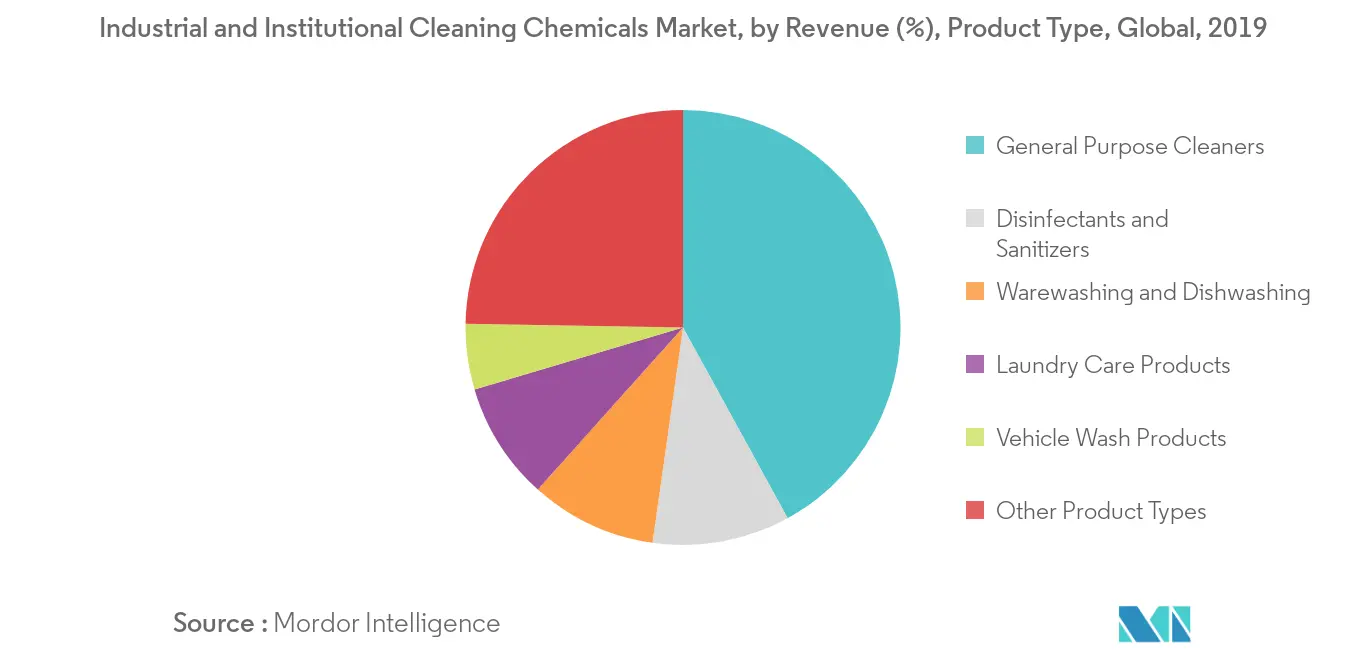
Competitive Landscape
The Brazilian industrial and institutional cleaning chemicals market is partly consolidated in nature. The top-three players in the market studied are Reckitt Benckiser Group PLC, Procter & Gamble, and 3M.
Brazilian Industrial And Institutional Cleaning Chemicals Industry Leaders
-
3M
-
Reckitt Benckiser Group plc.
-
Procter & Gamble
- *Disclaimer: Major Players sorted in no particular order
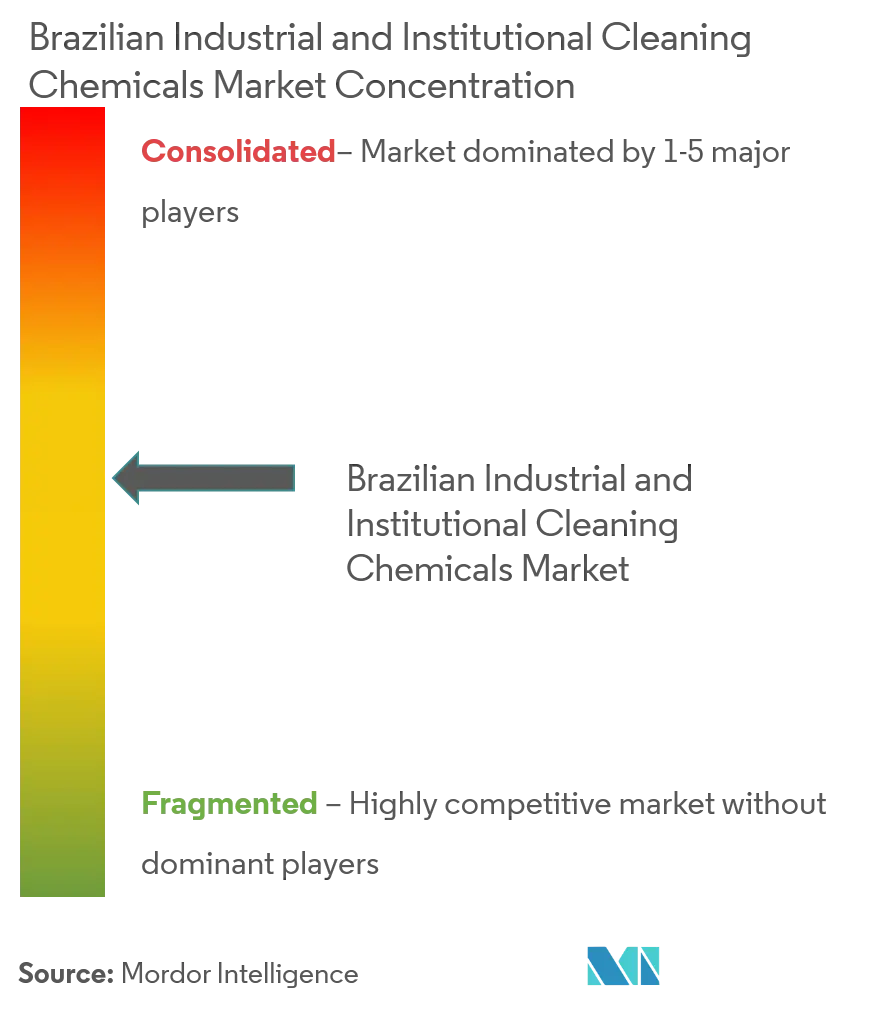
Brazilian Industrial And Institutional Cleaning Chemicals Market Report Scope
The scope of the report includes:
| Chlor-alkali | Caustic Soda |
| Soda Ash | |
| Chlorine | |
| Surfactants | Non-ionic |
| Anionic | |
| Cationic | |
| Amphoteric | |
| Solvents | Alcohols |
| Hydrocarbons | |
| Chlorinated | |
| Ethers | |
| Phosphates | |
| Biocides |
| General Purpose Cleaners |
| Disinfectants and Sanitizers |
| Warewashing and Dishwashing |
| Laundry Care Products |
| Vehicle Wash Products |
| Other Product Types |
| Commercial | Food Service |
| Retail | |
| Laundry and Dry Cleaning | |
| Healthcare | |
| Car Wash | |
| Offices, Hotels, and Lodging | |
| Manufacturing | Food and Beverage Processing |
| Fabricated Metal Products | |
| Electronic Components | |
| Other Manufacturing Processes |
| Raw Material | Chlor-alkali | Caustic Soda |
| Soda Ash | ||
| Chlorine | ||
| Surfactants | Non-ionic | |
| Anionic | ||
| Cationic | ||
| Amphoteric | ||
| Solvents | Alcohols | |
| Hydrocarbons | ||
| Chlorinated | ||
| Ethers | ||
| Phosphates | ||
| Biocides | ||
| Product Type | General Purpose Cleaners | |
| Disinfectants and Sanitizers | ||
| Warewashing and Dishwashing | ||
| Laundry Care Products | ||
| Vehicle Wash Products | ||
| Other Product Types | ||
| Market Type | Commercial | Food Service |
| Retail | ||
| Laundry and Dry Cleaning | ||
| Healthcare | ||
| Car Wash | ||
| Offices, Hotels, and Lodging | ||
| Manufacturing | Food and Beverage Processing | |
| Fabricated Metal Products | ||
| Electronic Components | ||
| Other Manufacturing Processes | ||
Key Questions Answered in the Report
What is the current Brazil Industrial and Institutional Cleaning Chemicals Market size?
The Brazil Industrial and Institutional Cleaning Chemicals Market is projected to register a CAGR of greater than 3% during the forecast period (2025-2030)
Who are the key players in Brazil Industrial and Institutional Cleaning Chemicals Market?
3M, Reckitt Benckiser Group plc. and Procter & Gamble are the major companies operating in the Brazil Industrial and Institutional Cleaning Chemicals Market.
What years does this Brazil Industrial and Institutional Cleaning Chemicals Market cover?
The report covers the Brazil Industrial and Institutional Cleaning Chemicals Market historical market size for years: 2019, 2020, 2021, 2022, 2023 and 2024. The report also forecasts the Brazil Industrial and Institutional Cleaning Chemicals Market size for years: 2025, 2026, 2027, 2028, 2029 and 2030.
Page last updated on:
